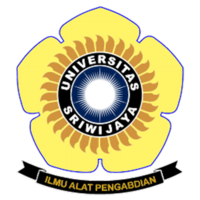Analisis Pupuk Organik Cair Air Limbah Budidaya Ikan Dengan Penambahan Bahan Organik Menggunakan Metode Mineralisasi Aerobic dan Anerobic
Abstract
Gustiar F, Munandar M, Qasanah U, Handayani RS. 2020. Analysis of liquid organic fertilizer for fish culture wastewater with the addition of organic matter using aerobic and anerobic mineralization methods. In: Herlinda S et al. (Eds.), Prosiding Seminar Nasional Lahan Suboptimal ke-8 Tahun 2020, Palembang 20 Oktober 2020. pp. xx. Palembang: Penerbit & Percetakan Universitas Sriwijaya (UNSRI).
Cycle of fish cultivation will produce liquid waste water from fish culture, which contains an accumulation of organic material from feed residue, fish secretions, bacteria and algae, so that the waste has the potential to be used as organic fertilizer. there is still low organic matter in fish culture water, so it is necessary to add other organic materials. This study aims to analyze the results of aerobic and anaerobic mineralized liquid organic fertilizer for fish culture wastewater with the addition of organic matter. The study used a factorial completely randomized design (CRD) with 3 treatments, namely the treatment of organic fertilizer, namely 1) fish water waste, 2) fish water waste + gamal leaves 3) fish water waste + gamal leaf + banana peel, with 2 factors of fermentation system, namely aerobic and anaerobic and 3 repetitions so that 18 experimental units will be obtained. The results showed that the growth rate of catfish was very good. The parameters used in this study were descriptive characteristics of organic fertilizers and laboratory analysis of pH and ingredients of N-Total, P-total, K-total, Ca-total, Mg-total. The results of this study indicate that the addition of organic matter will increase the nutrient content of organic fertilizers, the addition of organic material from banana peels will increase the content of phosphorus and potassium, the lowest pH of organic fertilizers was 3.95 in the anaerobic system, while the highest pH is in the aerobic system B2 treatment was 8,57.
Cycle of fish cultivation will produce liquid waste water from fish culture, which contains an accumulation of organic material from feed residue, fish secretions, bacteria and algae, so that the waste has the potential to be used as organic fertilizer. there is still low organic matter in fish culture water, so it is necessary to add other organic materials. This study aims to analyze the results of aerobic and anaerobic mineralized liquid organic fertilizer for fish culture wastewater with the addition of organic matter. The study used a factorial completely randomized design (CRD) with 3 treatments, namely the treatment of organic fertilizer, namely 1) fish water waste, 2) fish water waste + gamal leaves 3) fish water waste + gamal leaf + banana peel, with 2 factors of fermentation system, namely aerobic and anaerobic and 3 repetitions so that 18 experimental units will be obtained. The results showed that the growth rate of catfish was very good. The parameters used in this study were descriptive characteristics of organic fertilizers and laboratory analysis of pH and ingredients of N-Total, P-total, K-total, Ca-total, Mg-total. The results of this study indicate that the addition of organic matter will increase the nutrient content of organic fertilizers, the addition of organic material from banana peels will increase the content of phosphorus and potassium, the lowest pH of organic fertilizers was 3.95 in the anaerobic system, while the highest pH is in the aerobic system B2 treatment was 8,57.
Keywords
fish farming waste, organic matter, aeration
Full Text:
PDFArticle Metrics
Abstract view : 1041 timesPDF - 2952 times
Refbacks
- There are currently no refbacks.

